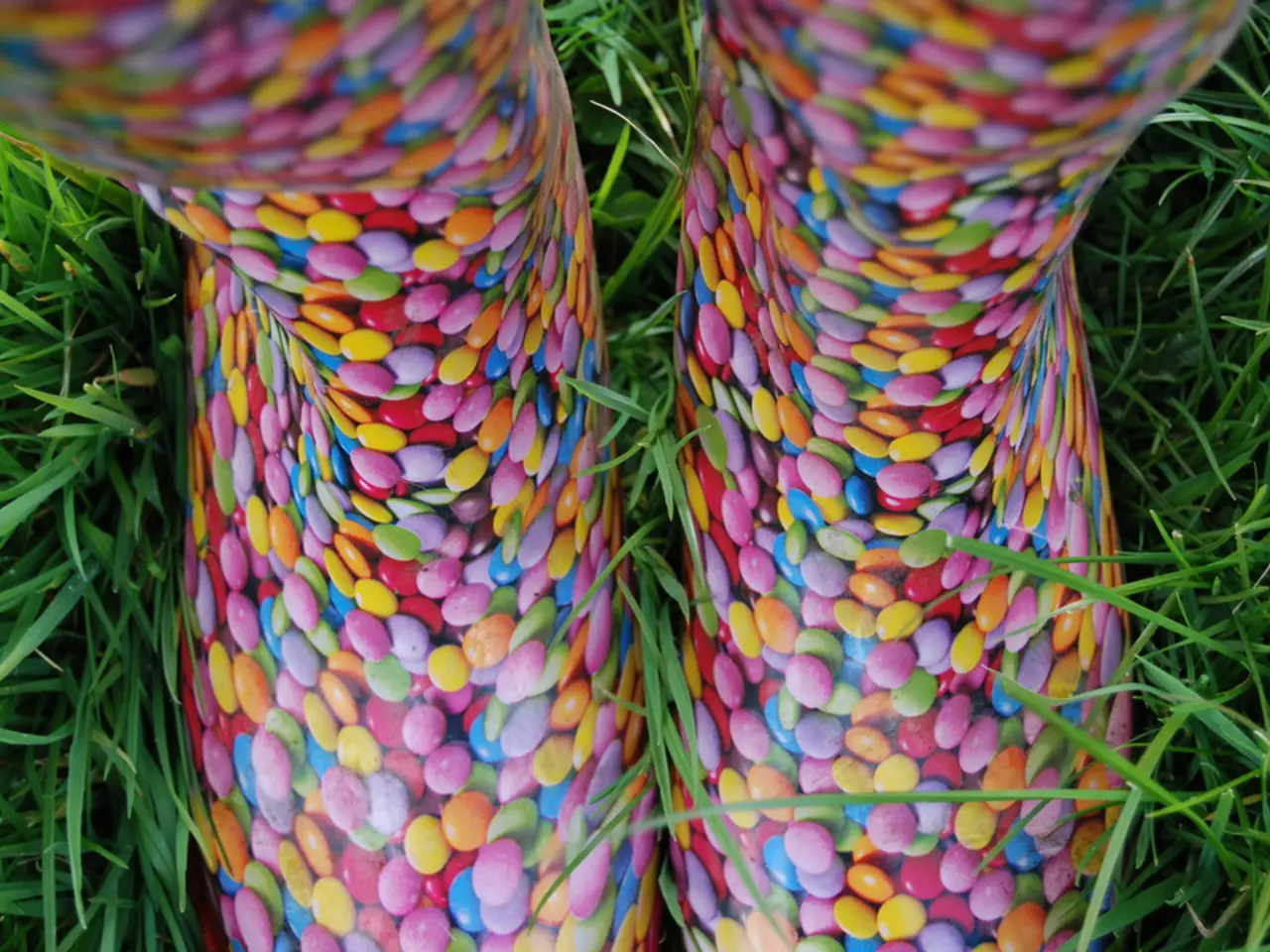Exploring the Optical Phenomenon of Cat's Eye in Jewels
**Unveiling the Fascinating World of Chatoyancy: The 'Cat's Eye' Phenomenon in Gemstones**
Chatoyancy, a captivating optical phenomenon in gemstones, is characterised by a narrow band of light that moves across the stone's surface as it is turned. This mesmerising effect is caused by the presence of parallel fibres or tiny tubes within the mineral, which reflect light and create a wavy or silky sheen.
One of the most popular chatoyant gemstones is the Cat's Eye Quartz, known for its captivating effect that resembles the eye of a cat. Other chatoyant gemstones include Hawk's Eye, Cat's Eye Chrysoberyl (Lahsuniya), and certain Tanzanite specimens.
The Cat's Eye Chrysoberyl, a highly sought-after gemstone, is valued for its mystical properties and astrological benefits. It displays a bright single band moving across its surface. Interestingly, in Victorian times, cat's eye gems were known as chrysolite and were popular for engagement rings.
Hawk's Eye exhibits a similar chatoyant effect, with a mesmerising blue colour. It is essentially the precursor to golden tiger's eye before iron oxidation occurs. Tanzanite Specimens, while not always showing full chatoyancy, can exhibit a chatoyant-like sheen due to inclusions.
The cabochon cut, which allows light to move smoothly across the surface, enhances the chatoyancy effect. This is most pronounced in stones with parallel fibres or inclusions, creating the moving band of light as the stone is turned.
The term 'chatoyancy' derives from the French for 'shining like a cat's eye'. The chatoyancy effect in cat's eye gems is caused by very fine needles that give a bright, sharply defined line. These inclusions may be hollow tubes or needle-like crystals of substances such as rutile or haematite.
Cat's eye gems are hard and durable, with a hardness of 8.5 on the Moh's scale. They can appear in colours such as yellow, yellow-brown, and greenish-yellow. Some cat's eye gems, like cat's eye alexandrite, can exhibit colour change, which is rare, expensive, and desirable.
It is worth noting that only chrysoberyl can be called simply 'cat's eye', while others must be prefixed by the species name. For the chatoyancy effect to be visible, there must be enough fibres oriented in parallel to the base of the stone, and the gemstone must be cut as a cabochon.
Chatoyancy is a gemmological term for the 'cat's eye' optical phenomenon visible in certain gemstones. While cat's eye quartz is popular and obtainable, other chatoyant gemstones like actinolite, sillimanite, and apatite can also be found easily.
In conclusion, chatoyancy adds a unique and enchanting quality to various gemstones, making them stand out in the world of jewellery. From the captivating Cat's Eye Quartz to the rare and valuable Cat's Eye Chrysoberyl, these gemstones continue to fascinate and intrigue those who appreciate their beauty and rarity.
- To deepen one's understanding of cat's eye gems and other chatoyant gemstones, various publications and online workshops on gemmology, science, and health-and-wellness are available for enthusiasts.
- For those interested in fitness-and-exercise, tech-savvy gemstone collectors might find gadgets and technology, such as smartphone apps, useful for identifying and analyzing different types of chatoyant gemstones.
- From foundations dedicating themselves to promoting the appreciation of gemmology, to offering various courses on the subject, aspiring gemmologists can continue their education and explore the fascinating world of chatoyancy further.
- In addition to their mesmerizing appearance, chatoyant gemstones are often utilized in the creation of jewelry designs, incorporating health-and-wellness properties and astrological beliefs, reflecting the broader trends in the world of jewelry and fashion.
- To preserve the beauty and rarity of chatoyant gemstones, proper handling, cleaning, and storage techniques are essential, showcasing the importance of technology and cutting-edge innovation in the field of gemmology, as gadgets and equipment designed to maintain the quality of gemstones become increasingly prevalent.




